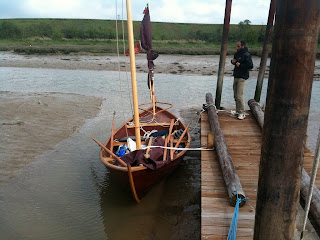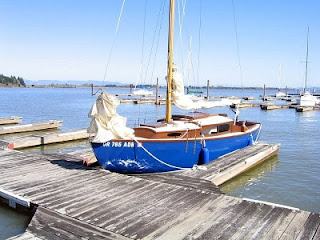
Many of you have already met Giacomo de Stefano. He's the intrepid traveler who made a self propelled trip on the river Po, Italy in a Ness Yawl. That trip was conceived to raise awareness of the environmental condition of the Po and other major industrial rivers. Giacomo's perspective, from sea-level (literally) is a very emotional one and the boat he chose reflects the spirit of the endeavor perfectly.
On his upcoming trip he will leave from the UK and make his way to Istanbul, using another Ness Yawl.
The boat Giacomo is using for this journey is Clodia, professionally built by Roland Poltock in Venice and Villa del Conte, Italy.
Designed by Scottish designer Iain Oughtred, the boat is 19 ft.LOA(5.6m) and similar to those the Vikings once used for fishing and transport and also related to those the fisherman from the Shetland Islands still use.

Clinker built, planked with mahogany plywood, she’s light but very seaworthy and good for both rowing and sailing.
She is built of 9mm okume plywood, italian oak and larch with pine for the floor boards. The beautiful tanbark sails are made by Core Sailmakers in Venice.

Clodia is designed to sail and row from London to Istanbul for a project called Man On The River, 5300 km by oar and sail, to promote the concept of a sustainable way of traveling with respect for overburdened European rivers.









































